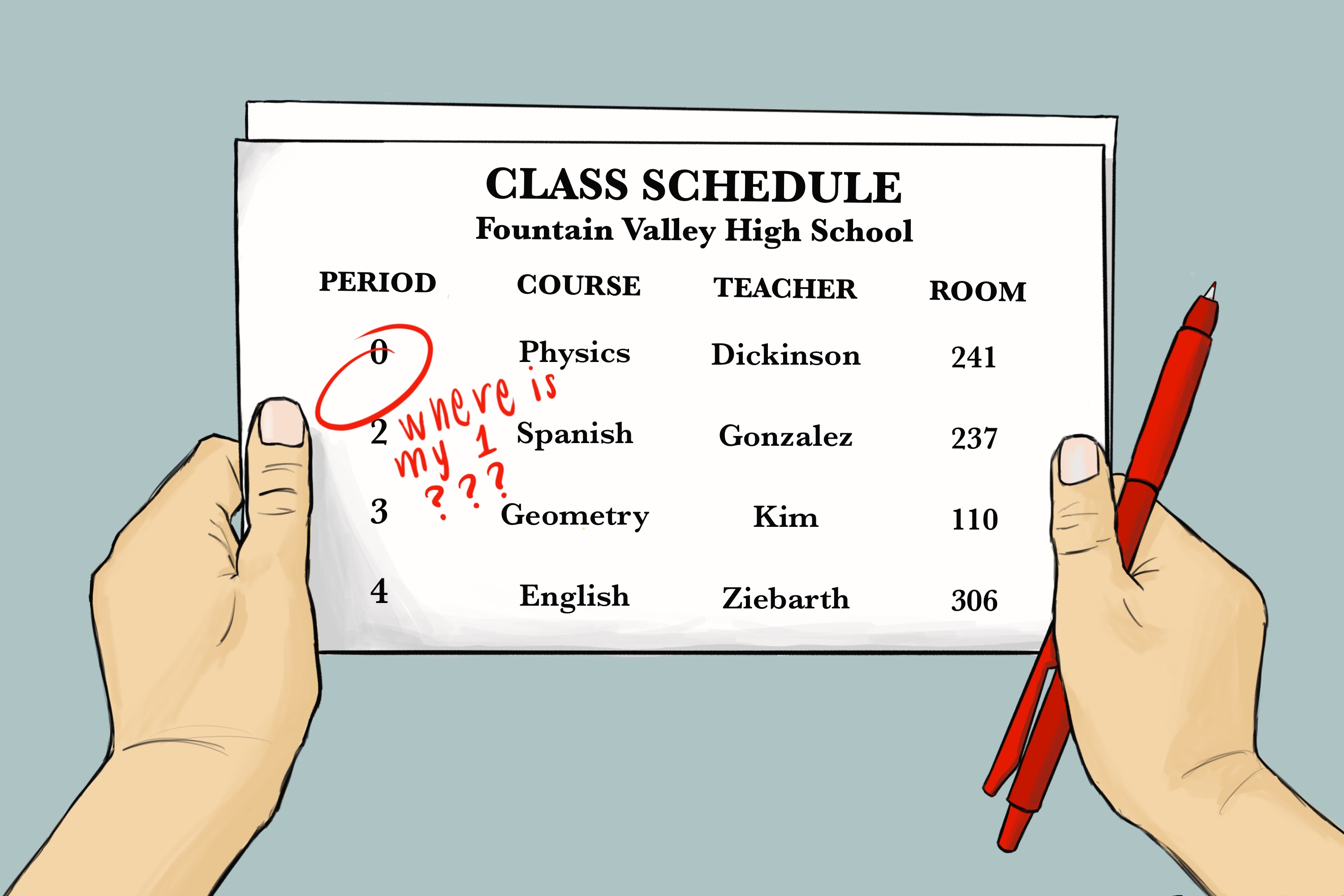
By Kevin Sears
Casey Harelson, the assistant principal of guidance, plans to disrupt Fountain Valley High School’s policy of releasing schedules the day before school in order to fix ‘holes’ in student’s schedules for the next school year.
With registration season over, many students have voiced their frustrations with the process. Some students faced difficulties receiving a chronological schedule, with what is described as a “hole” or missing class period in their registry. Other students did not receive the classes they chose in their course requests. To fix these issues, tens of students waited outside of the front office during the first week of school.
“It just wasn’t what I wanted. So especially with everyone changing their schedules and not getting what they wanted, which is understandable,” junior Joanne Nguyen said. “But so many people have holes in their schedule. And the fact that I was looking at my schedule, and it wasn’t lining up— it was really weird.”
Nguyen is a student with a hole in her schedule. She was initially frustrated and inquired as to why she was not given a first period.
According to Harelson, the creation of ‘holes’ in students’ schedules is a natural part of the process of creating the school’s master schedule.
“We have students who take courses in the summer, and we don’t know whether they’re going to say they’re going to take a course, we don’t know whether they’re going to complete the course [and] we don’t know whether they’re going to pass the test at the end of the course to validate,” Harelson said.
As reported by the Public Policy Institute of California, dual enrollment participation has been increasing over the years, with more than 112,000 participants in 2019-2020. As more high school students take dual enrollment, the impediment of dual enrollment to the school schedule will also increase.
The guidance team first collects data on what classes students are taking during the spring of the year before. Students may take and pass a summer course to be transferred to a different level class, but the guidance team won’t receive the credits until August. Holes appear in the schedule when guidance using changing course request data from spring to August.
In addition to dual enrollment classes, Harelson pointed to preference changes, placement tests and Individualized Education Plan (IEPS) as causes of holes.
Guidance knows they are working with teenagers who are prone to changing their minds. After creating an initial schedule in spring, guidance expects some students to drop or add classes during the summer and into the first week of school. In addition, students who took placement tests over the summer may have to wait until their test scores have been verified and submitted to the school before being transferred to a higher-level class.
Some students have an IEP used to accommodate their unique needs. An IEP student may have a case manager who will negotiate and discuss with the school to best aid the student. However, the discussion with the case manager takes time and makes changes that could affect the master schedule of the school.
Looking towards the future to better accommodate students, Harelson has some plans in mind. He wants to create a waitlist or a document that keeps track of a student’s second choice. For instance, if a student wants to take two science classes (i.e.AP Chemistry and AP Biology) the student will have to wait until every student has received a single science class. From then on, the double science student will automatically be placed in his or her second choice class too.
“We’ve already talked about ways we can make sure that students can see their schedule sooner this coming summer, so that we can resolve [holes and schedule issues],” Harelson said.





